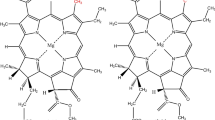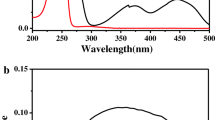Spectroscopy methods make it possible to record the features of specific photo-induced processes occurring inside and between molecules and, moreover, chemical and structural changes of such objects can be monitored and controlled interactively with the help of luminescent molecular probes with known spectral properties. In order to solve the general fundamental problem of establishing the connection of the photophysical and spectral-luminescent properties of organic molecules with their structure, a comparative analysis was made of the nature of electronically excited states and photoprocesses occurring in phenol and its related compounds (p-cresol and bisphenol A). To understand the mechanism of forming the absorption and fluorescence spectra of hydroxyaromatic compounds, the electronically excited states of the molecules under study are presented and analyzed together with the localization of molecular orbitals and the local minima of the electrostatic potential. The results of these calculations have shown that the proton-acceptor ability of isolated molecules is associated with an excess of electron density on oxygen atoms and increases in the series: phenol < n-cresol < bisphenol A. This order is maintained when excited to the S1 and S2 states. At the same time, the proton-acceptor ability of phenols decreases in comparison with the ground state. The consequence of the non-planar structure of the bisphenol A (BPA) molecule is the mixed orbital nature of the electronically excited states. The non-planar structure of the BPA leads to an increase in the spin-orbit interaction and in the intercrossing conversion constant between S1(ππ*) and T6(πσ*) states compared to phenol.
Similar content being viewed by others

References
Yu. P. Morozova, O. K. Tchaikovskaya, and Yu. N. Vasil’eva, Zh. Fiz. Khim., 72, No. 2, 272–279 (1998).
K. Fuke and K. Kaya, Chem. Phys. Lett., 94, No. 1, 97–103 (1983).
M. Tohmé, S. M. Prud’homme, A. Boulahtouf, et al., The FASEB J., 28, No. 7, 312–433 (2014).
É. M. Sokolov, L. É. Sheinkman, and D. V. Dergunov, Water: Chem. Ecol., No. 4, 26–32 (2012).
G. G. Matafonova, N. I. Vorob’eva, and V. B. Batoev, Izv. Vyssh. Uchebn. Zaved. Khim. Khim. Tekhnol., 57, No. 7, 118–121 (2014).
G. Grabner, G. Kohler, G. Marconi, et al., J. Phys. Chem., 94, 3609–3613 (1990).
G. Kohler and N. Getoff, J. Chem. Soc. Faraday Trans., 72, No. 10, 2101–2106 (1976).
GOST 12997-84 “SSI Products. General Specifications.” Specifications TU BY 100424659.013-2006 “Spektrofluorimeter SM 2203.”
V. Ya. Artyukhov and A. I. Galeeva, Russ. Phys. J., 29, No. 11, 949–952 (1986).
V. A. Blatov, A. P. Shevchenko, and E. V. Peresypkina, Semiempirical Computational Methods of Quantum Chemistry: A Textbook [in Russian], Publishing House “Univer-Groupp,” Samara (2005).
V. Ya. Artyukhov, N. N. Kopylova, L. G. Samsonova, et al., Russ. Phys. J., 51, No. 10, 1097–1111 (2008).
M. Dewar and R. Dogerty, Molecular Orbital Perturbation Theory in Organic Chemistry [Russian translation], Mir, Moscow (1977).
http:///www.cambridgesoft.com.
E. Scroco and J. Tomasi, Adv. Quant. Chem., 11, 115–193 (1978).
V. Ya. Artyukhov, J. Struct. Chem., 19, No. 3, 364–368 (1978).
O. N. Tchaikovskaya, T. V. Sokolova, and I. V. Sokolova, Zh. Prikl. Spektr., 72, No. 2, 165–170 (2005).
Author information
Authors and Affiliations
Corresponding author
Additional information
Translated from Izvestiya Vysshikh Uchebnykh Zavedenii, Fizika, No. 9, pp. 144–150, September, 2019.
Rights and permissions
About this article
Cite this article
Bocharnikova, E.N., Tсhaikovskovskaya, O.N. & Artyukhov, V.Y. Quantum-Chemical Study of the Nature of Electronically Excited States of Hydroxyaromatic Compounds. Russ Phys J 62, 1700–1707 (2020). https://doi.org/10.1007/s11182-020-01895-x
Received:
Published:
Issue Date:
DOI: https://doi.org/10.1007/s11182-020-01895-x



